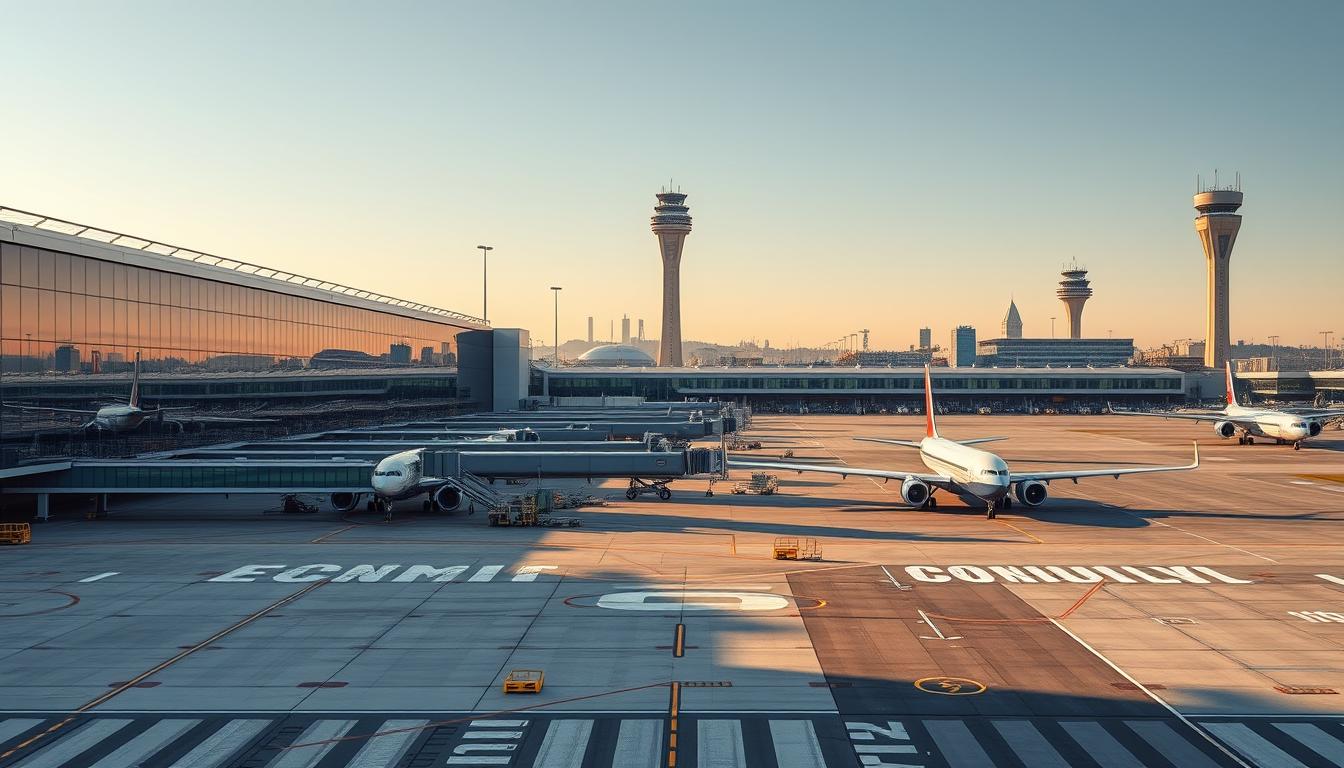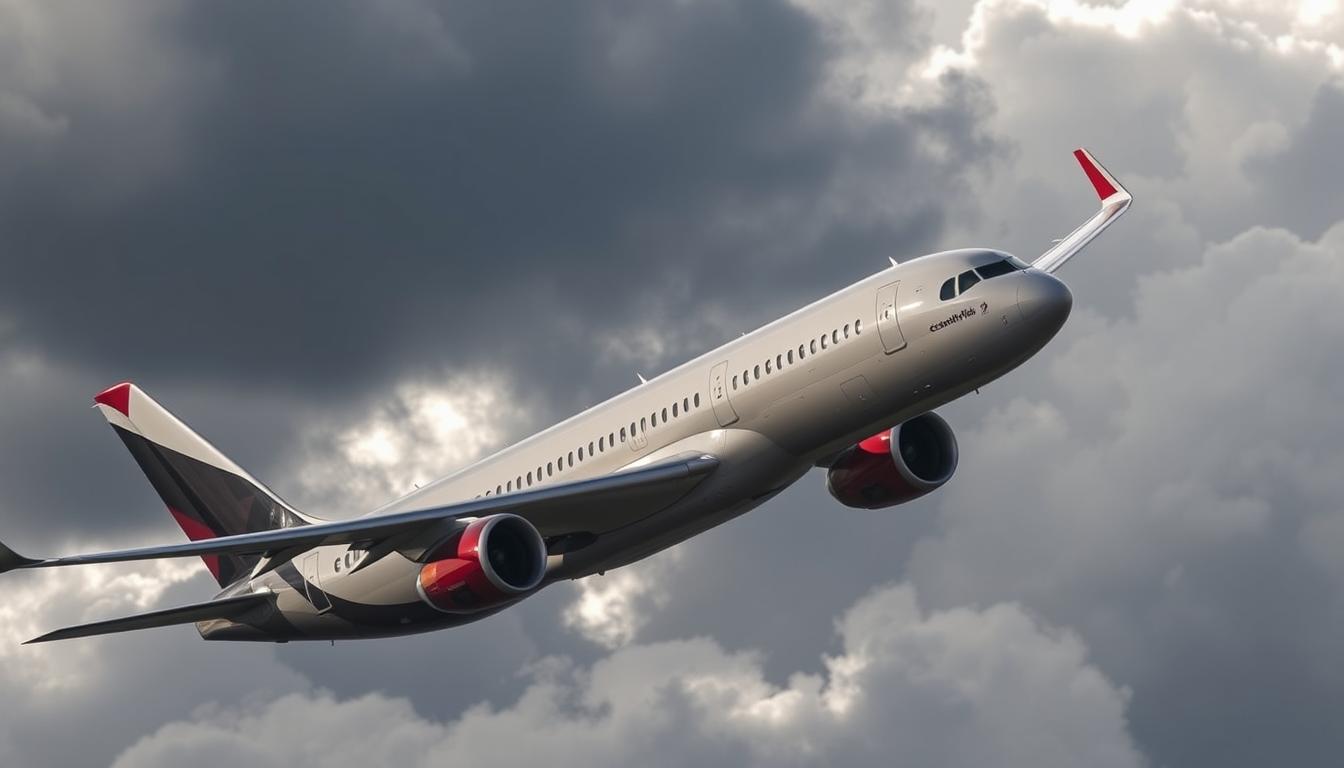On June 2, American Airlines flight AA780 from Philadelphia International Airport to Naples International Airport took an unexpected detour. The Boeing 787-9 aircraft, registered as N837AN, was diverted to Rome’s Leonardo da Vinci–Fiumicino Airport.
This unexpected diversion occurred while the aircraft was flying over the Mediterranean at around 26,000 feet. Initially scheduled to depart at 19:12 local time, the flight took off at 19:42. The change in course happened at around 9:08 local time as it approached Naples.
The incident raises important questions about logistics planning and operational oversight in the airline industry. What caused this error, and how did it impact passengers? This article will explore the details of the incident and the lessons that can be learned from it.
Key Takeaways
- The diversion of American Airlines flight AA780 was caused by an aircraft model incompatibility issue.
- The incident highlights the importance of accurate logistics planning in the airline industry.
- The flight’s unexpected detour resulted in significant operational challenges.
- The impact on passengers was substantial, with potential delays and inconvenience.
- The incident serves as a case study for operational oversight and error correction.
The Unexpected Diversion: Flight AA780’s Mid-Air Reroute
As Flight AA780 approached Naples, the pilots altered its course to Rome Fiumicino Airport. This unexpected decision was made as the aircraft was beginning its descent, leaving passengers surprised.
Flight Details and Initial Journey
American Airlines Flight AA780 was on its way to Naples, Italy, with a planned arrival time in the morning. The flight had been uneventful until the approach to Naples. Passengers were preparing for landing when the announcement came.
The initial journey had lasted several hours, and passengers were expecting a routine landing. However, the crew had other plans.

The Sudden Change of Course
The diversion occurred over the Tyrrhenian Sea, approximately 124 miles from Naples. The decision to divert to Rome Fiumicino Airport was made by the crew, led by the experienced pilots. After landing at Rome Fiumicino Airport around 9:45 a.m., passengers were transported to Naples by bus.
| Flight Information | Details |
|---|---|
| Original Destination | Naples (NAP) |
| Diverted To | Rome Fiumicino Airport |
| Distance Between Destinations | Approximately 124 miles |
| Landing Time at Rome | 9:45 a.m. |
When Logistics Turn Costly: American Airlines Flight Rerouted Due to Model Error
A model error resulted in a costly diversion for American Airlines Flight AA780. The incident highlights the complexities and challenges faced by airlines in ensuring compliance with aviation regulations.
The Critical Aircraft Size Miscalculation
The Boeing 787-9 Dreamliner, a larger variant of the 787 series, was mistakenly scheduled for a route that included a stop at Naples International Airport. However, Naples Airport is classified as an ICAO code 4D airport and has limitations regarding the size of aircraft it can accommodate.
The aircraft size miscalculation was critical because the 787-9 is larger than the 787-8, with different Rescue and Fire Fighting Services (RFFS) categories. According to Boeing, the 787-8 is categorized as RFFS category 8, while the 787-9 is categorized as RFFS category 9.
RFFS Categories and Airport Compatibility Issues
Naples International Airport is a category 8 RFFS airfield, meaning it is equipped to handle aircraft up to category 8. The category RFFS of an airport is determined by its capability to respond to emergencies involving aircraft of various sizes.
- The RFFS category is based on the aircraft’s fuselage length and width.
- A higher category indicates a larger aircraft and requires more extensive firefighting capabilities.
- The Boeing 787-9, being a category 9 aircraft, exceeded the RFFS capabilities of Naples Airport.

This incident underscores the importance of accurate aircraft sizing and categorization in ensuring safe and compliant flight operations.
Passenger Impact and Airline Response
The diversion of American Airlines Flight AA780 due to a model error had a significant impact on its passengers. The sudden change in plans caused inconvenience and raised concerns among those on board.
Transportation Alternatives for Stranded Passengers
Following the diversion, American Airlines arranged for alternative transportation for the stranded passengers. The airline’s team worked to ensure that passengers reached their destination with minimal delay. The Boeing 787-9 departed Rome two-and-a-half hours later, operating Flight 111 to Chicago.
American Airlines’ Official Statement
American Airlines issued a statement apologizing for the disruption caused by the diversion. They attributed the incident to “operational reasons,” though the specific cause was related to an aircraft model incompatibility. The airline’s response was met with a mix of understanding and skepticism from the affected passengers. The incident highlighted the need for clear communication between airlines and their customers during such events.

Conclusion: Lessons from the Naples Diversion Incident
The mid-air rerouting of American Airlines Flight AA780 due to a critical aircraft size miscalculation brings to light the financial and reputational implications of such operational errors. Despite the Philadelphia to Naples route performing well with an average load factor of 89% between June and October 2024, the diversion caused significant inconvenience to passengers.
The incident highlights the importance of meticulous planning in airline operations, particularly in matching aircraft types with destination airport capabilities. The financial implications of such errors are substantial, including costs associated with alternative transportation and potential compensation.
As a non-EU carrier, American Airlines wasn’t subject to EU261 compensation rules, raising questions about passenger protections on international routes. This incident serves as a reminder of the complex interplay between technical regulations, operational decisions, and customer experience in the airline industry.
In conclusion, the Naples diversion incident underscores the need for precise logistics and planning in airline operations to prevent such costly errors and maintain customer goodwill.
FAQ
▶
▶
▶
▶
▶
▶














